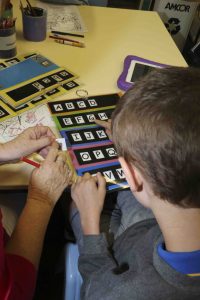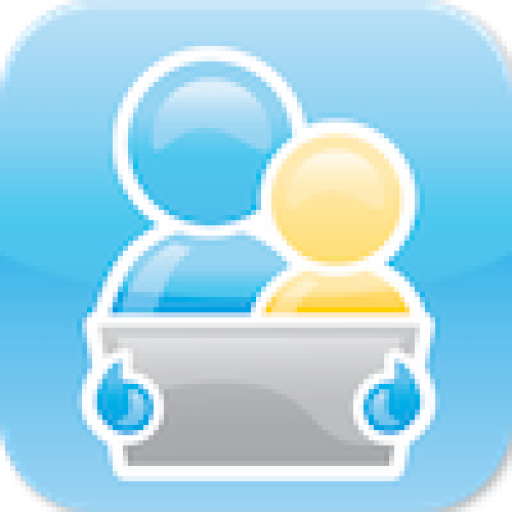
Chloe re-writing a favourite book from Tar Heel Reader
Writing is a complex task, involving ideas, language, words, spelling and transcribing or selecting letters. We need to teach all of these skills – and eventually students need to be able to do all of these, within the one task, to become writers.

Overall guidelines
- Do you have time scheduled for an independent writing block every day?
- Are your students using a pencil or alternative pencil that allows them to focus on the cognitive aspects of writing e.g. alphabet board, flip chart, keyboard, eye gaze system, iPad and app, pen or pencil?
- Does their pencil include access to all 26 letters of the alphabet?
- Do your students have real reasons for writing? (and remember – writing never involves copying and tracing; writing involves thinking of ideas, language, words AND transcribing)
- Do you model writing to your classroom each time before you ask them to write?
- Do you have a time for writer’s chair so that students can share their writing with others?

Taylan’s writing (in Abilipad)

For emergent students
- Are you giving your students lot of opportunities to learn the function of writing without focusing on the form e.g. following through on notes handed to you, writing yourself reminders and then using them, writing a morning message?
- Do they have daily opportunities to write without standards using a pencil with access to all 26 letters?
- When they have finished writing do you say “now let me show you how I would write it” and model writing rather than interrupting them during the writing task or putting demands on their writing?
- Are you offering them a range of writing tasks, such as writing about personal experiences, high interest topics, classroom topics, letter writing, signing in?
- Are you following through on writing tasks e.g. posting letters?
- Do you have a daily or weekly shared writing activity, such as predictable chart writing?

Jack’s writing (with an alphabet chart, teacher scribes)

Lachlan signing in
For conventional students
- Do you focus your modelling of writing on different aspects of the writing task each day e.g. using the word wall, using capitals, using punctuation, thinking of ideas, thinking of your audience in planning writing, using different sorts of vocabulary, etc.?
- Are you modelling aspects of writing for a while before you expect your students to start using them?
- Are you including free writing so that students learn to self-select in this block?
- Have you done a chart of topics “we all know about” with your class as ideas for free writing?
- Are you using the prompt “tell me more about that” to get students to extend their writing?
- Are you teaching students to edit writing, starting with teaching them to edit your writing and then transitioning to their own?
- Are you using editing checklists as students start self-editing e.g. “do my sentences have capitals and punctuation, do all my sentences relate to the topic”?
- Are you encouraging your students to publish?

Zac’s writing (on a computer)

Cooper’s writing
Thanks to the students from Willans Hill School and Adelaide West Special Education Centre whose writing appears above – and to everyone at both schools who are such awesome writers, teachers and learners 🙂
To download the information above as a handout click here.
For more information
Keedogo and Keedogo Plus: Custom Keyboards for the iPad
Letter writing: Writing for Real Reasons
Predictable chart writing: Group Writing for All
Balanced Literacy Instruction: Writing for Real Reasons
Lots of Alternatives: Pencils for Everyone
Abilipad: Still the Write Tool for the iPad





Pingback: Writing in our classrooms – Jane Farrall | Alan Stewart's AT Blog
Mia
jane